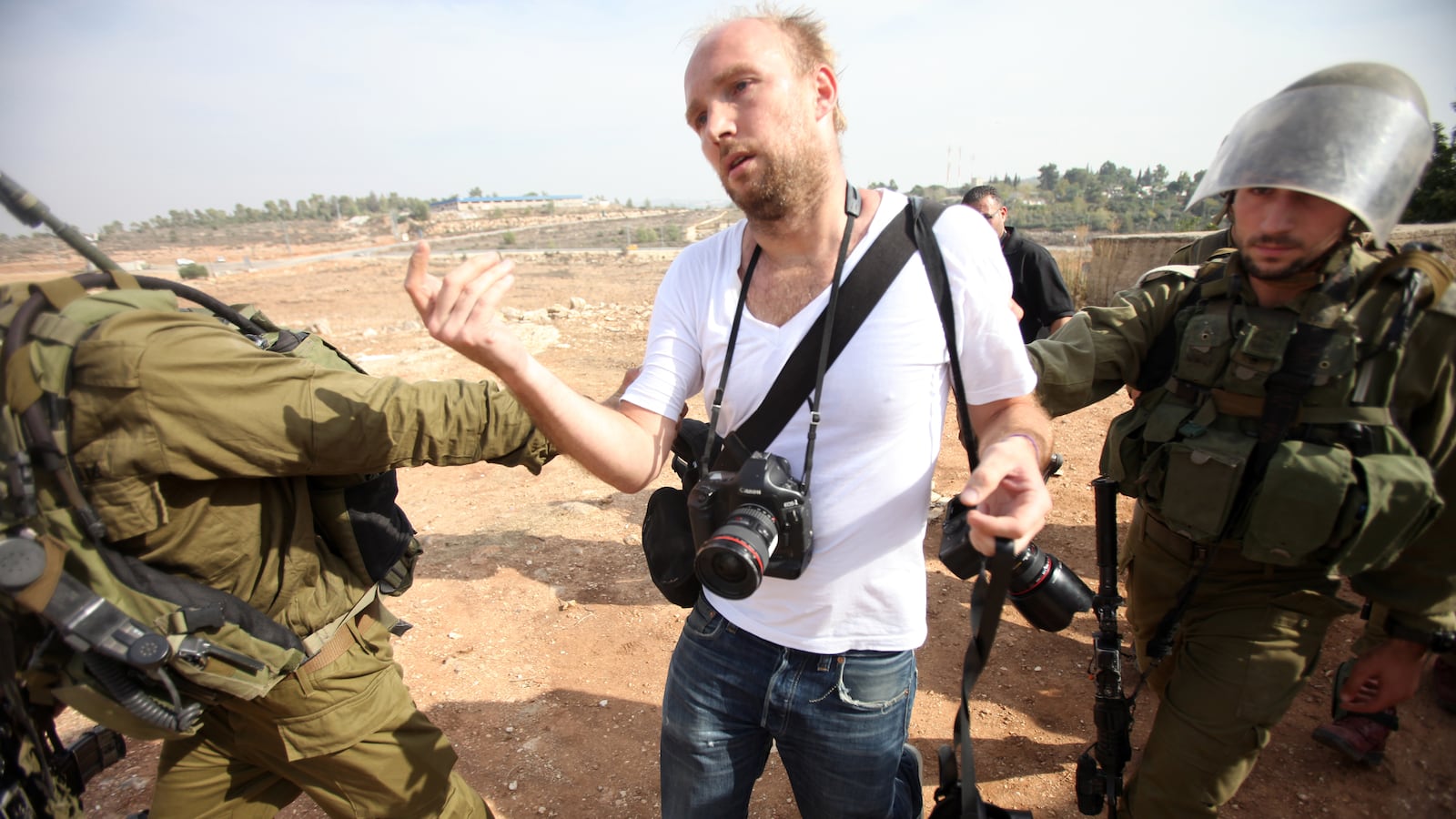The Israeli government is pulling out all the stops for President Obama's visit to this tiny nation, right down to special lighting cast upon the Old City of Jerusalem so that Obama can gaze over it from his hotel room at the King David. The high-wattage bulbs hold some symbolism: the idea of the visit is to portray Israel—constantly plagued by conflict and controversy—in a positive light. But to do that, the Israeli government needs to elide the very feature that looms largest over the past twenty-some-odd years of the relationship: the occupation of Palestinian territories. How to get around this? Simply tell journalists that going is a bad idea, and that's exactly what the Israeli government is doing. "Israel has also suggested that journalists could avoid going to the West Bank with Obama when he meets with Palestinian leaders," the Associated Press reported last week. Everything is being done to give international journalists other options. A recent release from the Israeli Government Press Office boasts of a new facility—a "National Press Center"—that will carry live-feeds of Obama's trip into the West Bank to visit with Palestinian Authority President Mahmoud Abbas and subsequent jaunt to Bethlehem.

Having crossed back and forth into the West Bank several times this weekend, both by bus and in a private car, the reasons for trying to dissuade journalists from travelling here were painfully obvious: it looks really bad for Israel. Any journalist with an informed guide would become quickly aware of nearby settlements, and the roads that cut through the West Bank's landscape to give them access to Israel proper. The Palestinian roads, with litter and piles of trash strewn about, suffer from frequent potholes, have no streetlamps illuminating them, and wind back and forth along hillsides with either no guardrails, or occasional posts, bent out of shape, where guardrails were once attached. The roads built for Israel's settlers, which beeline from their gated West Bank enclaves back into Israel, are smooth, newly paved swaths of concrete, dutifully lined in the center and at their edges, and illuminated by lamps every 50 meters or so. It's one territory, but with literally quite different road maps.
Should a journalist get a West Bank Palestinian fixer—the journalism term for a guide who often sets up meetings—the difference between Israel and the West Bank will become all the more obvious. With an international passport, a reporter can move freely between Israel and West Bank. But if that reporter wanted to follow Obama from Ramallah to Bethlehem, they'd run into trouble. Israelis and internationals can pass through Israeli-annexed Jerusalem, knocking an hour or so off the trip, to transit between the two West Bank cities. But a Palestinian from the West Bank would need to travel all the way around on a circuitous route. Passing into Jerusalem and out of Jerusalem will take one through multiple Israeli military checkpoints, de facto international crossings. The checkpoints built on roads that access Israeli settlements are notoriously lax; the main one for Palestinians entering the capital, Kalandia, requires hours of waiting, flanked by high concrete walls topped with coils of sharp concertina wire and ominous watch towers.
"Israel will try to use this as a chance to market itself and show there is more to the country than conflict," Gabriel Wiemann, a political communications expert at Haifa University, told the Los Angeles Times. But this is a misstatement: the opening of the same Times article mentions that a U.S.-funded Iron Dome missile battery will be brought into Ben Gurion airport to greet Obama because he didn't have time to visit one in the field. In other words, Israel is showing off the conflict, too. What the government here is trying to keep from the view of international journalists isn't the conflict, but the Palestinians' view of it, particularly the nature of the occupation and its ill effects on their everyday lives.






